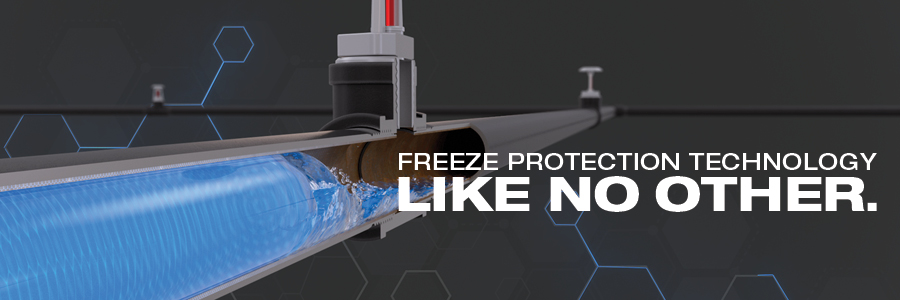
Comparing Sprinkler Antifreezes: They’re Not All the Same
Antifreeze Comparison
If you are looking for an antifreeze to protect your fire sprinkler system this winter, it’s important to know that these products are not interchangeable. In fact, sprinkler system antifreezes differ in very significant ways. Most notably, there are currently only two – freezemaster™ antifreeze and Tyco® LFP, which means that a set of very stringent criteria has been met as required by NFPA for new systems now and for existing systems by September 30, 2022. Others are not even listed.
Criteria For Selecting An Antifreeze
What are the criteria that should drive the selection for severe cold weather protection of wet fire sprinkler systems? Here are just some of the variables:
- Is the sprinkler antifreeze UL-listed?
- Will the sprinkler antifreeze protect against the severe cold?
- Is the sprinkler antifreeze approved for use with the type of piping system?
- How does the sprinkler antifreeze safeguard against piping corrosion, including microbiologically influenced corrosion (MIC)?
- Does the sprinkler antifreeze allow for easy identification of a fully flushed and filled system?
Only freezemasterTM antifreeze lines up with all these variables. The material scientists at Lubrizol Advanced Materials are committed to continuous innovation in bringing our customers the most dependable fire safety products. Our proprietary technology is intended to ensure your antifreeze system is designed and installed using the safest and most reliable practices in the industry.
Antifreeze Comparison
Below is a comparison of the commercially available antifreezes for fire sprinkler systems. Click here to view the chart as a PDF.
| Antifreeze Brand | UL-Listed | FBC™ System Compatible | Minimum Use Temperature | Pour Point | Burst Point | Fluid Coloring | Galvanized Pipe Usage | Corrosion Performance |
|---|---|---|---|---|---|---|---|---|
| freezemaster™ Antifreeze | Yes | Yes | -12°F (-24°C)* | -22°F (-30°C) | -58°F (-50°C) | Blue | Yes, per UL 2901 testing | Includes a corrosion inhibitor package unlike any other product on the market, with IP 287 test results showing 0% corrosion Lacked sign of continued biofouling from bacterial growth after 336 hours of third-party testing in conditions conducive to MIC |
| Tyco LFP (Glycerin) | Yes | Yes | -10°F (-23°C)* | -16°F (-27°C) | – | Clear | No | IP 287 test results showed 65% corrosion Showed signs of biofouling after 336 hours of third-party DNA testing |
| Noble GL-38 (Propylene Glycol) | No | – | 0°F (-18°C) | -15°F (-26°C) | -50°F (-46°C) | Orange | Yes | |
| Noble GL-48 (Glycerin) | No | Yes | -15°F (-26°C) | -25°F (-32°C) | -50°F (-46°C) | Orange | Yes | |
| Whitlam GL-48 (Glycerin) | No | – | -15°F (-26°C) | -25°F (-32°C) | -50°F (-46°C) | Orange | Yes | |
| ARGCO Glycerin 48% Premix | No | – | -15°F (-26°C) | -25°F (-32°C) | -50°F (-46°C) | Clear | No | |
| Chemfast Glycerin 48% | No | – | -15°F (-26°C) | – | -50°F (-46°C) | Orange | Yes |
*UL-listed minimum use temperature
It’s also important to specifically understand why not all sprinkler antifreeze products are created equal when it comes to resisting damaging corrosion. freezemaster™ antifreeze not only meets industry requirements, but also exceeds them with a corrosion inhibitor package unlike any other product on the market, listed or unlisted. Fire sprinkler systems do their lifesaving work best when they are protected from damaging corrosion. Get the background by downloading the free white paper, “The Importance of Corrosion Protection in Listed Antifreeze for Fire Protection Systems.”

